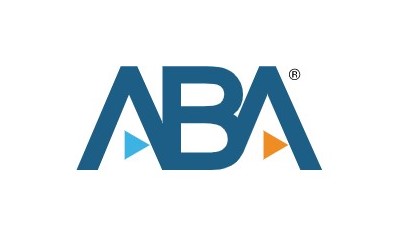LATEST UPDATES
Menu
Millions of families & small businesses have justice problems every year, but most people go without help. Low-income people are particularly affected, but middle-class families and small businesses are also locked out of the civil justice system.
Often, people don’t even identify these problems—a credit card debt, a dispute with a landlord—as legal, or think there is anything that can be done about them. Or they think (often correctly) that they can’t afford a lawyer. Sometimes, these problems end up in court, where people are often on their own. In 3 out of 4 cases in state courts, at least one side is without legal representation.
The Rhode Center’s work seeks to help us better understand the causes and effects of this access crisis and identify possible policy solutions to drive impactful change. We produced the first empirical assessment of reforms to the regulation of legal practices implemented in Arizona and Utah and created the Legal Innovation Toolkit to help guide states considering regulatory reform. And in early 2024, we will be sponsoring a major conference with the RAND Corporation focused on bringing leading California policy makers together to engage in these critical conversations on regulation and access to legal help.

Most Americans facing civil justice problems in their daily lives either cannot or do not get legal help.

The justice gap is a multi-faceted problem with many layers of contributing factors. But scholars agree that one of the key factors are the state restrictions on the provision of legal services.

State supreme courts across the country are considering regulatory changes to increase access to justice. How might re-thinking the restrictions on the practice of law address the justice gap? What options are on the table and what do we know about the impacts of regulatory choice?

Most Americans facing civil justice problems in their daily lives either cannot or do not get legal help.

The justice gap is a multi-faceted problem with many layers of contributing factors. But scholars agree that one of the key factors are the state restrictions on the provision of legal services.

State supreme courts across the country are considering regulatory changes to increase access to justice. How might re-thinking the restrictions on the practice of law address the justice gap? What options are on the table and what do we know about the impacts of regulatory choice?

The Legal Regulatory Innovation Toolkit provides resources for policymakers and other stakeholders to better understand and engage with the questions driving the movement to rethink the regulation of legal services in the United States.

Designing and Implementing Legal Regulation
An analysis of alternative structural models for legal services regulation.

Re-Imagining the Bar
This white paper discusses options for state courts to re-structure the regulation of the practice of law.

Legal Innovation Clearinghouse
Regularly updated searchable database of new legal entities authorized in Utah and Arizona.
Legal Innovation After Reform: Evidence from Regulatory Change Gain insights from the first empirical study of emerging innovation facilitated by legal regulatory reform.

The Surprising Success of Washington State’s Limited License Legal Technician Program
Learn how Washington’s program helped address access to justice.

Legal Regulatory Reform FAQs (forthcoming)
England and Wales pass the Legal Services Act, allowing “Alternative Business Structures”—legal services providers that are not 100% owned by lawyers.
Australia becomes the first country to have a publicly traded law firm, Slater and Gordon.
England and Wales authorize the first Alternative Business Structures.
Professor Deborah Rhode, CLP’s founder and director, and Executive Director Lucy Ricca publish the first comprehensive analysis in decades of how states enforce the ban on the unauthorized practice of law (UPL).
Professors Deborah Rhode and Gillian Hadfield publish an article in Hastings Law Journal, arguing that the U.S. should adopt England and Wales’ regulatory approach in order to promote innovation.
Gillian Hadfield speaks to Utah judges and bar leaders about the possibility of a new approach to legal services regulation that is based on calibrating risk.
The Utah Supreme Court and State Bar charge Justice Deno Himonas and past Bar President John Lund to make recommendations for “optimizing the regulatory structure for legal services.”
Margaret Hagan, director of CLP’s Legal Design Lab, and Lab fellow Jorge Gabriel Jimenez publish the white paper “A Regulatory Sandbox for the Industry of Law.”
The Utah Work Group on Regulatory Reform—including Margaret Hagan, Lucy Ricca, and Gillian Hadfield—releases their report “Narrowing the Access-to-Justice Gap by Reimagining Regulation” recommending a “regulatory sandbox” approach that “permits innovation . . . while addressing risk.”
CLP hosts a convening on regulatory reform and access to justice, with a kickoff panel featuring Justice Himonas and LSC President James Sandman.
The American Bar Association passes a resolution calling on states to “consider regulatory innovations that have the potential to improve the accessibility, affordability, and quality of civil legal services.“
Deborah Rhode, CLP’s Jason Solomon, and 3L Annie Wanless release the white paper “How Reforming Rule 5.4 Would Benefit Lawyers and Consumers, Promote Innovation, and Increase Access to Justice.”
The State Bar of California Board of Trustees votes to move forward with a task force to explore a robust version of the sandbox. Before this divided vote, CLP organized a letter from legal ethics scholars that urged moving forward.
Utah Supreme Court hires former Executive Director of CLP, Lucy Ricca, to start their Office of Legal Services Innovation and run the regulatory sandbox.
Arizona Supreme Court abolishes Rule 5.4 and starts allowing Alternative Business Structures to “promote business innovation in providing legal services at affordable prices.”
Professor and now CLP co-director David Freeman Engstrom is appointed to the State Bar of California’s Closing the Justice Gap working group, to explore use of a sandbox.
CLP’s Jason Solomon and 3L Noelle Smith release a white paper on the success of Washington state’s legal-technician program.
Florida Task Force recommends a regulatory sandbox, citing CLP’s 2020 white paper on Rule 5.4 and the symposium based on work presented at our Fall 2019 convening.
Professor and CLP co-director Nora Freeman Engstrom joins a group of law professors in submitting an amicus brief supporting the nonprofit Upsolve’s First Amendment challenge to New York’s restriction on the unauthorized practice of law.
The State Bar of California’s Board of Trustees accepts a working-group recommendation to move forward with a program to license paraprofessionals in certain areas of law. CLP submits several written comments during the process and spoke at working-group meetings to help ensure the proposal is evidence-based.
CLP (now the Rhode Center) releases a white paper, co-authored by Lucy Ricca and Tom Clarke, outlining a regulatory-design framework for states that are rethinking their approach to legal regulation.
The Rhode Center releases a report, co-authored by David Engstrom and Lucy Ricca, with the first-ever findings on the providers that have emerged after regulatory reform.
Rhode Center co-directors Nora and David Freeman Engstrom joins a group of law professors in submitting an amicus brief supporting the plaintiffs-appellees in Upsolve, Inc. v. James case on improving public access to basic legal assistance.
The Rhode Center submits letter in support of reform proposal before North Carolina legislature,
The Stanford Law Review hosts a symposium devoted to access to justice.
Rhode Center Co-Directors publish The Making of the A2J Crisis in the Stanford Law Review.
of tenants in New York are unrepresented in eviction actions, and 96% are unrepresented in child support actions.





